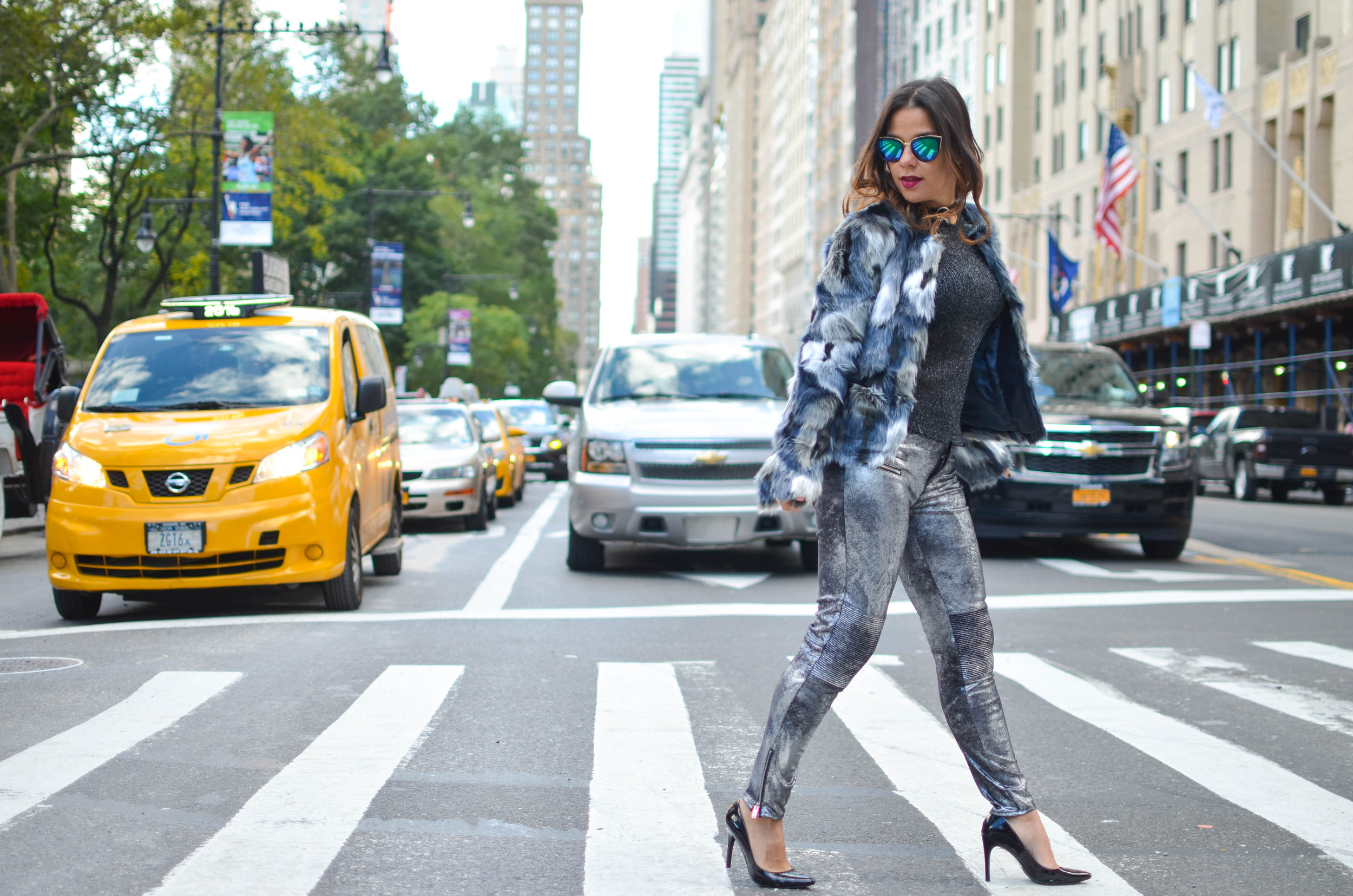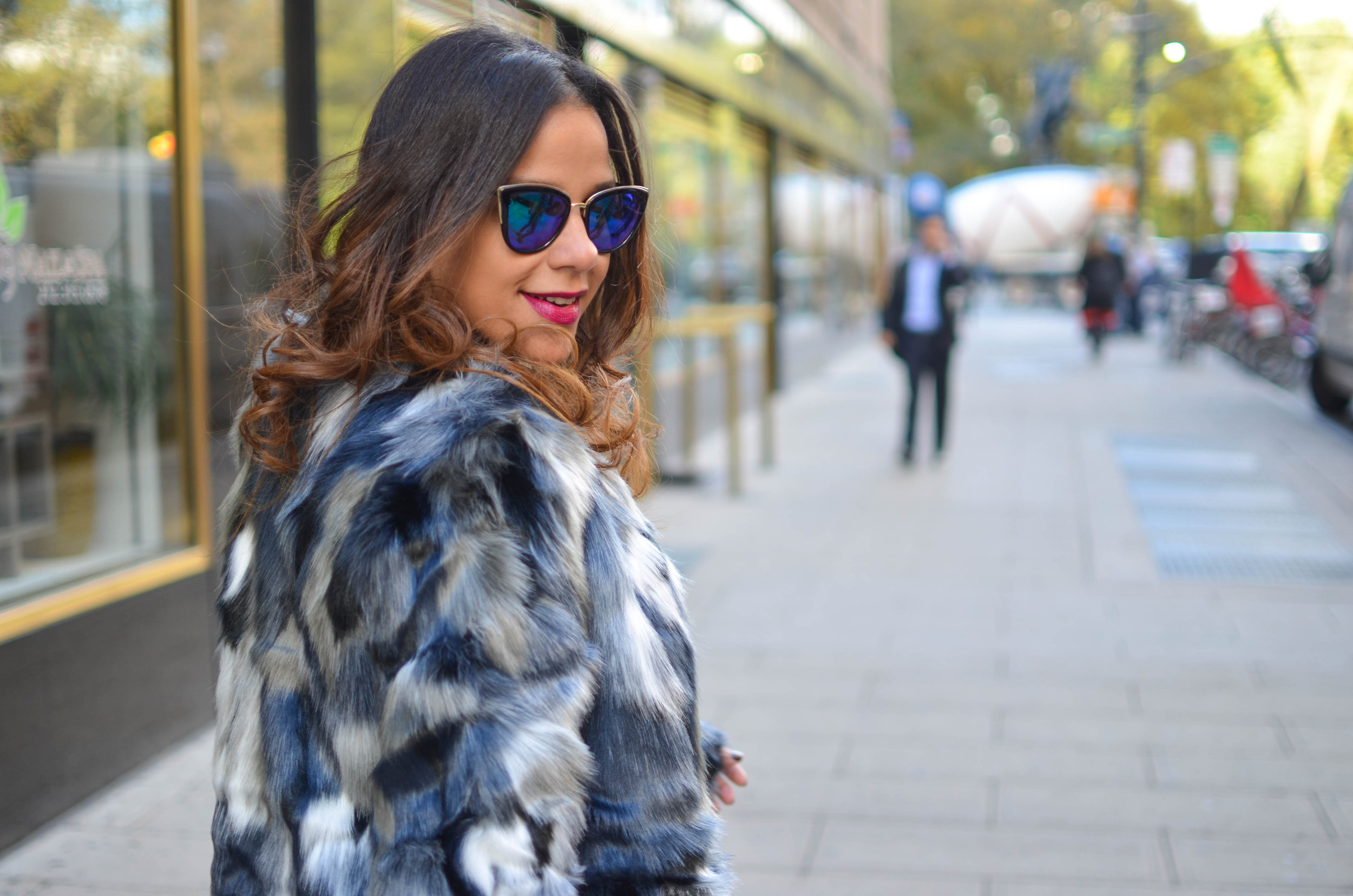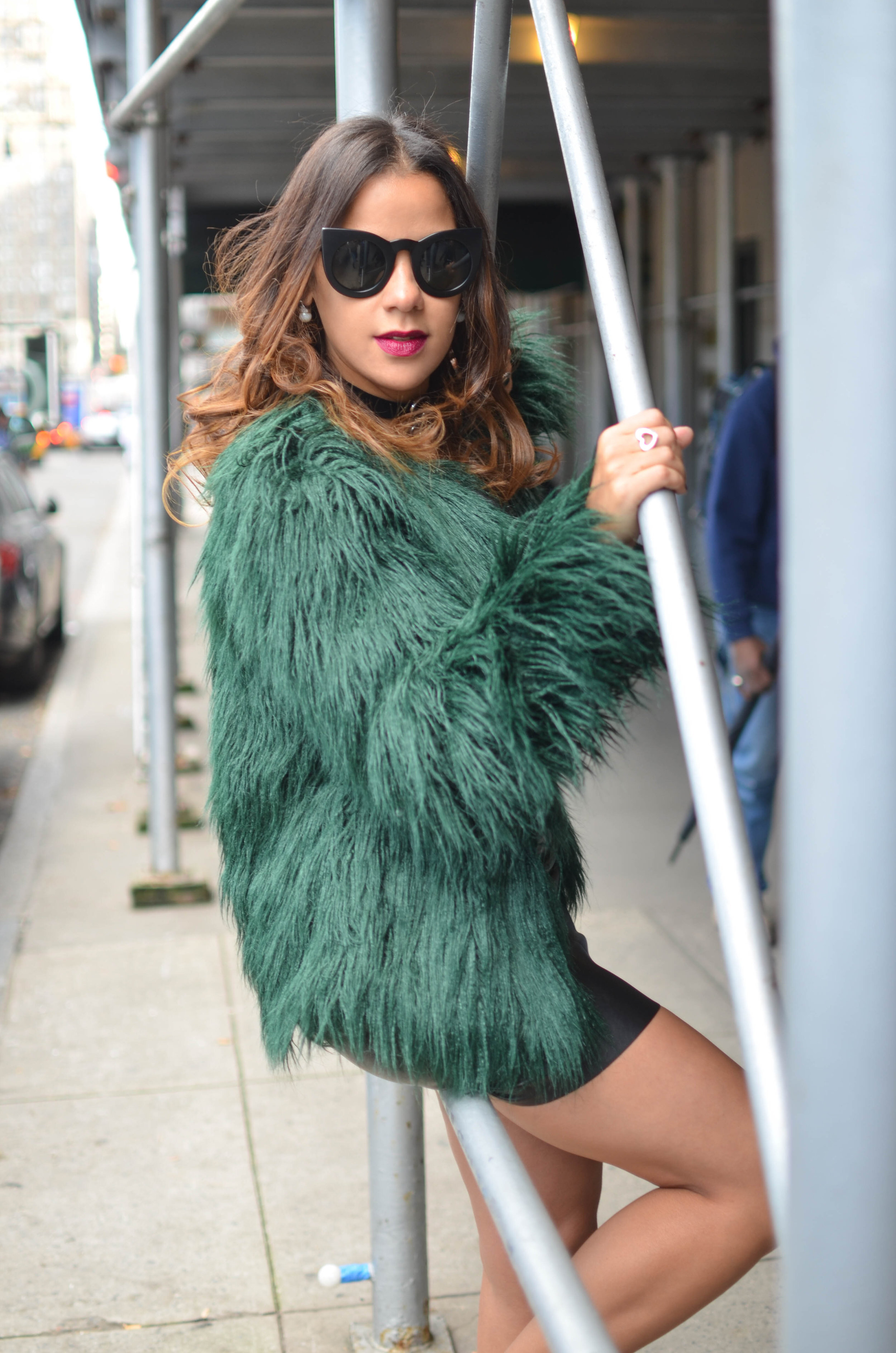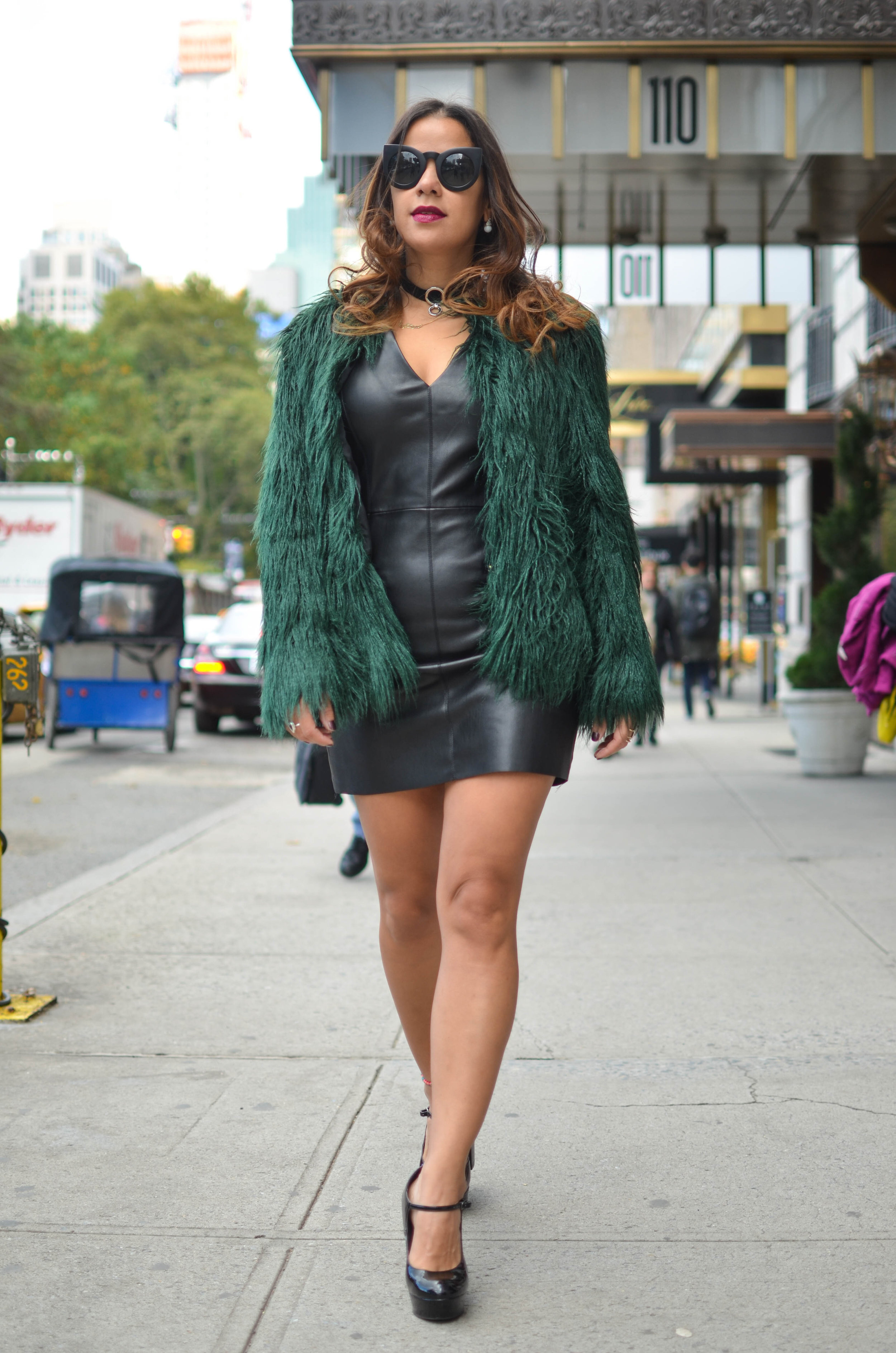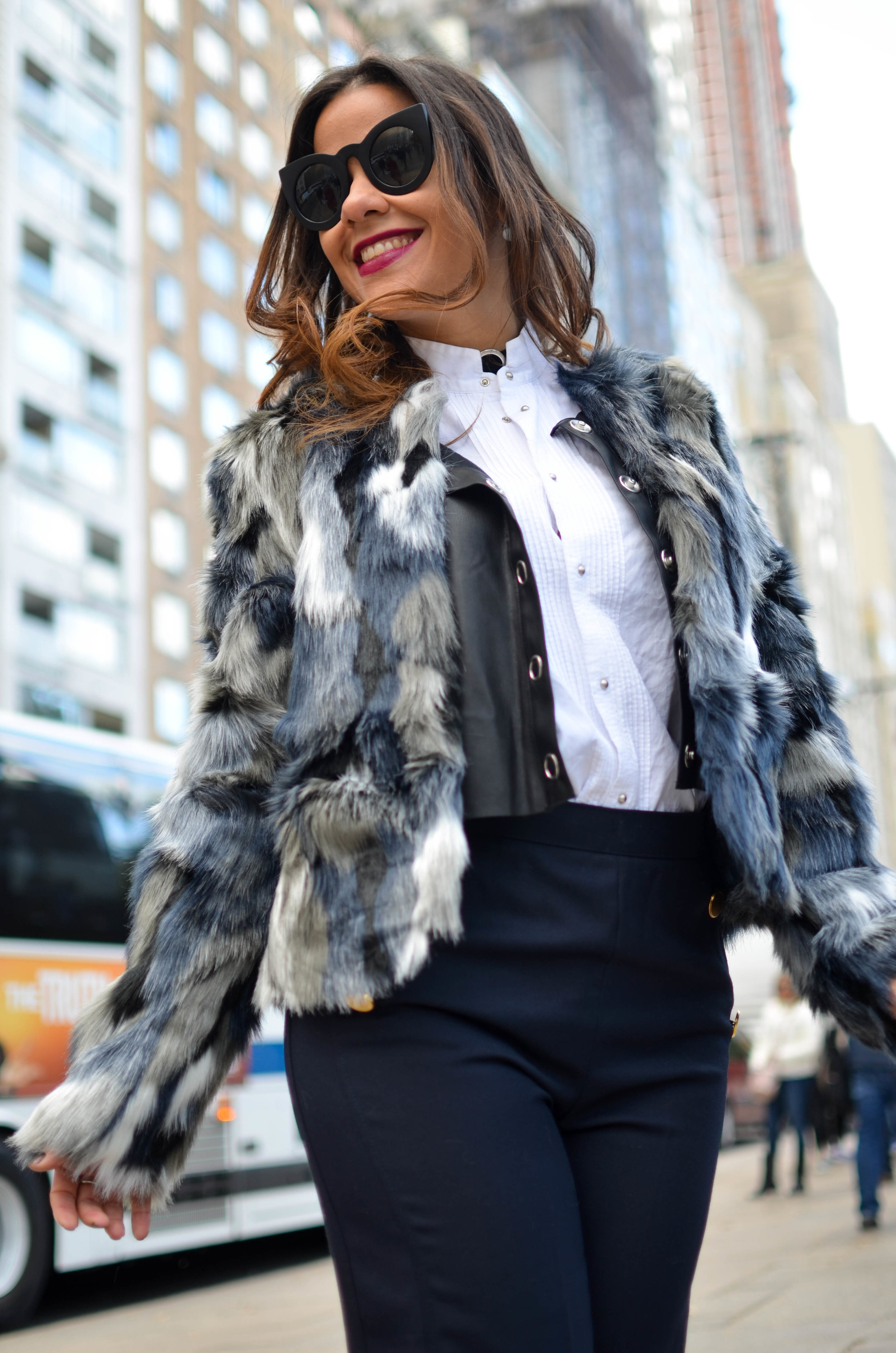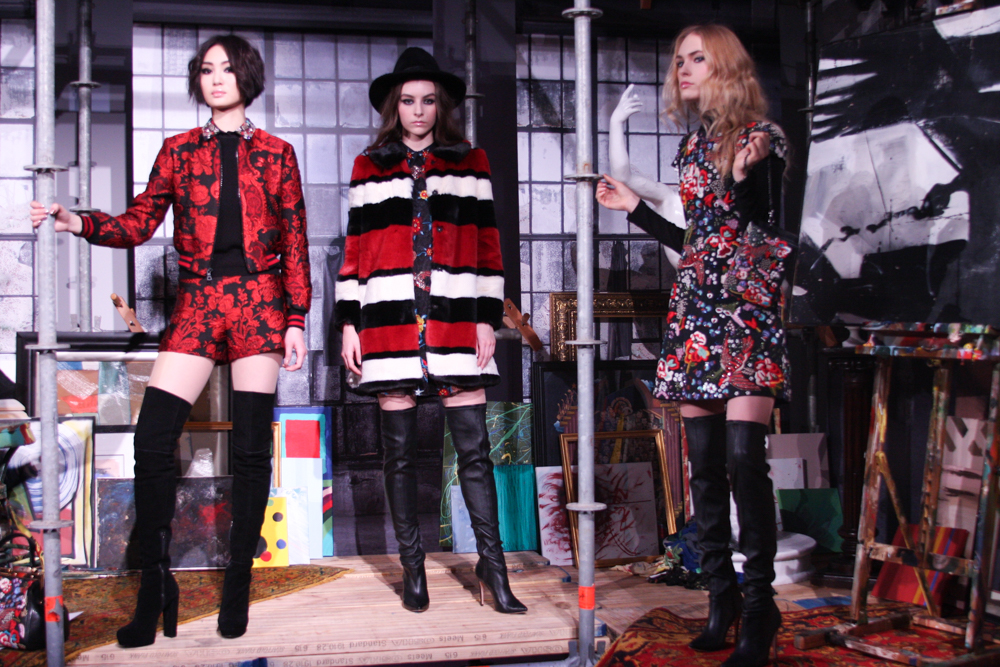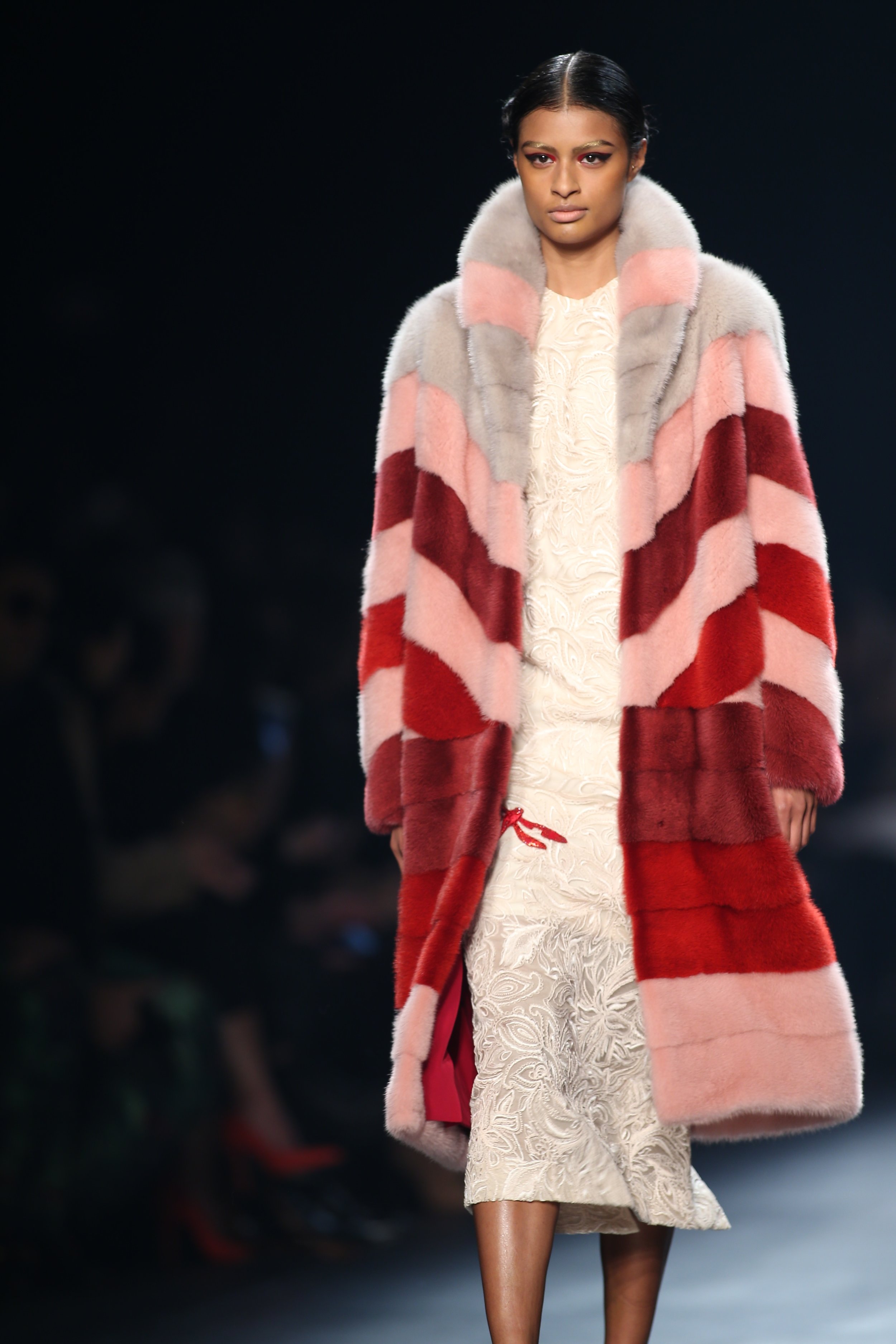To Wear Or Not To Wear: Fur
Photos: @julitonyc
I have always been an animal protection activist and that is why 5 years ago when my aunt flattered me a beautiful vintage navy blue jacket with fur collar and cuffs, I never wore it because of the cruel practices used to create these garments, but around 2 weeks ago I came back from a suffocating heat in Dominican Republic to a New York bipolar fridge and the only piece of clothing I had available to cover me was THE jacket, that has been hanging in my closet forever and I must say NOW I understand why people wear fur. The sense of power and beauty that radiates from an animal pelt make you feel like the lord of the universe but along with it, a deep feeling of guilt an shame.
I of course got curious and started reading historical and actual information, since I find really odd that designers are starting to introduce fur in their collections again after so many years of keeping them out of the runaways and doing it in a vegan an vegetarian era, where go green and organic is the only way?. Some claim to use animals that died by natural causes or accidents and others like Jess Eaton an Stella McCartney are using rodents (still animals) to create garments, I'm pretty sure the demand of fur is bigger the amount of animals that die daily by these causes.
The Fur Council of Canada, for instance, has a website, promoting the premise that sustainably- produced fur from farm-raised mink or would-sourced beaver is renewable resource, while petroleum, the basis is synthetic is not. As Alan Herscovivi, vice president of the council, said, "there will be fur long after the last oil wells are empty."
Over the years, PETA has marshaled an army of sympathetic designers: Stella McCartney, Calvin Klein, Tommy Hilfiger and Vivienne Westwood, among others. The organization also rallies celebrities (Pink and Ricky Gervais lent their voices to “Stolen for Fashion,” one of the group’s anti-fur ads) to assist in “fur shaming.”
Just three years ago, Kim Kardashian, who has a fondness for minks, got flour-bombed at a perfume introduction by a woman, who allegedly shouted, “Fur hag!”
Whether activists create a similar spectacle on Wednesday, when Fendi stages its show, remains to be seen.
But they are facing a different climate: one in which even Ms. McCartney, one of fashion’s most vocal animal rights activists, joined the recent faux-fur boom by presenting a full line of sumptuous faux-fur coats in her autumn and winter collection unveiled this March in Paris, a notable foray into anything resembling fur.
It wasn’t an easy decision, she said.
“For years, we were looking at fake furs, but it never felt like the right message for us to promote the look of fur,” Ms. McCartney wrote in an email. With dramatic improvements in the look and feel of synthetics, she said, “we finally found something that looks great and is consistent with our philosophy on luxury and cruelty free fashion.”
As for me I'm curious about mixing looks with of course synthetic fur this season, lets see how it goes.
Photos by me
A LITTLE BIT OF HISTORY:
Animal pelts, or fur and leather, have been used by humankind as clothing since the earliest times to protect their bodies from climatic conditions and harm. Furs and leather have remained popular over the ages because of their warmth, durability, and their status symbol. In certain early societies animal pelts and their by-products took on mystical or spiritual powers when worn by hunters or the ruling classes. In European societies luxury furs became associated with social stratification. In the last two centuries, the growing middle classes in Western Europe and in North America have developed a love for fashion furs as a way of expressing their social status, or to give themselves an ultra-modern look. Since the 1980s questions have been raised about the ethics of using animal products as entire species may have been wiped out by fashion (Lee, 2003, p. 254). Despite the efforts of anti-fur activists and their sensitizing campaigns associated with animal cruelty, the popularity of wrapping oneself in a “sensual second skin” continues to persist. Could it be that some people still believe in a hidden form of “contagious magic” when attired in fur or leather?
The significance of animal pelts in early societies:
In early societies hunters believed in “contagious magic,” that is, in the transference of the strength, power, courage, skills, prowess, and fertility of a particular animal to a human being. For example, when a hunter tied a lion skin around his waist or flung it over his shoulder he believed that he would gain the strength of a lion (Harris & Johnston, 1971, p. 12). In Pagan traditions some people express a reverence for a particular animal. Those with an affinity for wolves or bears, for example, collect emblems of the animal such as their tooth or fur. Harvey (1997) states “that in ceremony, meditation and dreams they ‘become’ their chosen animal” and they will ask the animal “for support and guidance in spirit journeys and healing” (p. 171-172).
Relationship between furs and ruling classes:
Since early times, particular animal skins or furs have been reserved for the ruling and elite classes. For example, in Egypt during the period 3000-300 BC, leopard skin and lion skin was worn only by kings as well as high priests when they performed symbolic ceremonies (Hansen, 1956, p. 11; Tortora & Eubank, 2010, p. 37). Beginning in the 11th Century, in Western Europe, luxury furs such as ermine, mink, sable, and chinchilla, to name a few, were reserved for the royalty, nobility, high ranking clergy, and the bourgeoisie. Durant (1950) relates that some barons “were known to mortgage their lands to buy ermine for their wives” (p. 833).
By the 13th and 14th Centuries, the growing mercantile class who was becoming wealthy and powerful through trade and commerce began to adopt the manners and fashion of dress of the aristocracy. They liked to adorn themselves and their wives in luxury furs which had been restricted for royalty and the ruling classes (Heer, 1961, p. 92-93). To maintain social distinction in dress, in the 1200s the ruling classes began to pass Ordinances or Sumptuary Laws. In Germany, a law stated that sable and ermine were reserved for noble ladies. In France, a Royal Ordinance passed in 1294 stated that no man or woman of the middle classes might wear ermine or vair (the bluish gray and white fur of a squirrel prized for ornamental use in medieval times) (Boucher, n.d., p. 179-180). In the 1300s-1400s Sumptuary Laws regulated the types of fur different social classes could use in the trimming and lining of garments. A law also specified that lower class women were only allowed to wear the fur of foxes, otters, and small burrowing rodents (Tortora & Eubank, 2010, p. 157). But, as Boucher (n.d.) points out, Ordinances passed in 1350, 1367, and 1380 may not necessarily have been observed (p. 206). In the early 1600s, with the growing impoverishment of aristocracy who lived off the land in Western Europe, wealthy merchants and traders began to buy themselves knightly manors and administrative posts (Heer, 1961, p. 41-43; McNeill, 1967, p. 430- 532). In France, it was possible for furriers with enough capital to fill the coffers of royalty to become ennobled (Boucher, n.d., p. 280).
The growing demand for luxury and fashion furs by the nobility, the upper classes and the new mercantile classes over the centuries led to the opening of new trade routes and the establishment of fur trade monopolies. Beginning in the Twelfth Century, German traders had the monopoly of the highly coveted fur industry as they had access to the finest Russian furs, particularly ermine (the white winter coat of weasels). They became known as the masters of the fur trade (Durant, 1950. p. 833).
With the colonization of New France and New England between the 17th and 18th Centuries, Western European furriers, hatters, and leather manufacturers were assured an almost unlimited supply of pelts. However, luxury furs continued to be accessible only to the wealthy and powerful classes. Anyone unable to afford the expensive skins (ermine, sable, weasel, squirrel, bear, beaver, must, lynx, otter, polecat, marten, and fox) had to satisfy themselves with the cheaper varieties (hare, rabbit, lamb, and wolf) (Heer, 1961, p. 92-93). After 1870, the fur trade between North America and Europe was no longer a major industry. Fur farms began to fill the void. Lee (2003) writes that 85% of the fur used today comes from farmed animals (p. 277).
